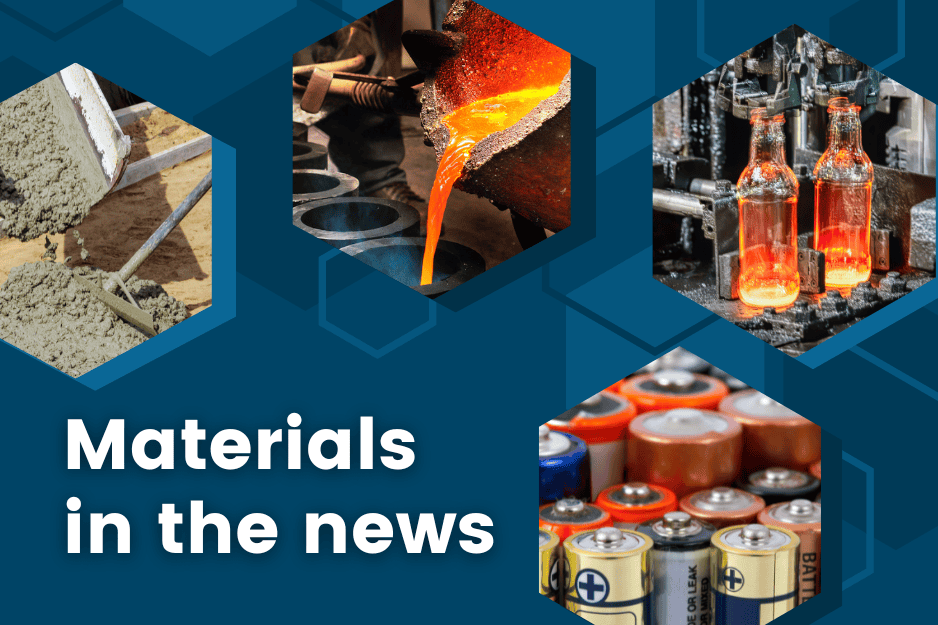
[Image above] Credit: ACerS
NANOMATERIALS
‘Super’ sapphire resists scratches, glare, fog, and dust
Researchers at The University of Texas at Austin created sapphire nanostructures with antiglare, antifogging, antidust, and scratch-resistant properties. The nanostructures, which are inspired by moth eyes, can be fabricated using high-throughput nanomanufacturing techniques.
Twisting atomically thin layers fine tunes superconductivity
Researchers led by RIKEN Center for Emergent Matter Science discovered a new way to control superconductivity by simply twisting atomically thin layers of niobium diselenide deposited on a graphene substrate.
ENERGY
AI reveals secrets of dendritic growth in thin films
Researchers led by Tokyo University of Science developed an artificial intelligence model for analyzing dendritic structures. The novel method bridges structure and process in dendritic growth by integrating persistent homology and machine learning with energy analysis.
Niobium tungsten oxide allows lithium batteries to charge faster
Researchers in China and the U.S. used electron microscopy and machine learning to explore the possibility of using niobium tungsten oxide as cathodes in lithium-ion batteries. After building a prototype using the new material, the researchers found that it could hold 77% of the initial capacity after 500 charging cycles, while also maintaining a high energy density.
Invention offers path to stable, low-cost solar hydrogen production
Researchers from Imperial College London and Queen Mary University of London introduced a multilayer device architecture that integrates an organic photoactive layer with a protective graphite sheet functionalized with a nickel-iron catalyst. This innovative design achieved an unprecedented combination of high efficiency and durability for hydrogen production.
New method to increase production of nuclear fusion fuel
Isolating lithium-6, an isotope used to produce nuclear fuel, has conventionally been done using a process which requires toxic liquid mercury. Researchers developed a mercury-free method based on a membrane made of zeta-vanadium oxide.
Cracking the code on molten salt fuel production
Researchers at Idaho National Laboratory demonstrated an efficient way to produce fuel for the world’s first fast-spectrum, salt-fueled reactor test. A full-scale demonstration will be held to produce five batches of highly enriched uranium fuel salt before the end of 2025.
BIOMATERIALS
Uniquely shaped, fast-heating nanoparticles halt ovarian tumor growth
Oregon State University researchers developed cobalt-doped iron oxide nanoparticles that show exceptional heating efficiency when exposed to an alternating magnetic field. When the particles accumulate in cancerous tissue after intravenous injection, they are able to quickly rise to temperatures that weaken or destroy cancer cells.
ENVIRONMENT
New carbon-negative material could make concrete and cement more sustainable
Using seawater, electricity, and carbon dioxide, Northwestern University researchers developed a new carbon-negative building material. The new study builds on previous work to store CO2 long term in concrete and to electrify seawater to cement marine soils.
Coral-inspired structure sequesters CO2 to make strong building material
Inspired by coral’s biomineralization, researchers from the University of Southern California developed an electrochemical manufacturing method that converts CO2 into calcium carbonate minerals around 3D-printed polymer scaffolds.
MANUFACTURING
Method to produce stronger and more durable carbonatable concrete
Temple University researchers developed a new method for making carbonatable concrete that increases carbonation depth. Initial tests show that concrete made with this process has an 80–100% increase in its mechanical and durability performance compared to current carbonatable concrete.
OTHER STORIES
Novel memristors to overcome AI’s ‘catastrophic forgetting’
Researchers from Forschungszentrum Jülich developed a novel memristor that offers significant advantages: it is more robust, functions across a wider voltage range, and can operate in both analog and digital modes. The new memristor uses a filament made of metal oxides rather than a purely metallic one like in other ECM memristors.
Novel robot can stick landings like a squirrel
Based on studies of the biomechanics of squirrel leaps and landings, researchers at the University of California, Berkeley designed a hopping robot that can stick a landing on a narrow perch.
Bronze Age pottery reveals El Argar’s economic and political boundaries
Researchers from the Autonomous University of Barcelona and the Max Planck Institute for Social Anthropology identified the economic and political borders separating El Argar, considered to be the first state-society in the Iberian Peninsula, from its La Mancha and Valencia Bronze Age neighbors. The research is based on the analysis of pottery vessels.
Author
Lisa McDonald
CTT Categories
- Weekly Column: “Other materials”
Related Posts
Other materials stories that may be of interest for December 17, 2025
December 17, 2025
Other materials stories that may be of interest for December 10, 2025
December 10, 2025
Other materials stories that may be of interest for December 3, 2025
December 3, 2025